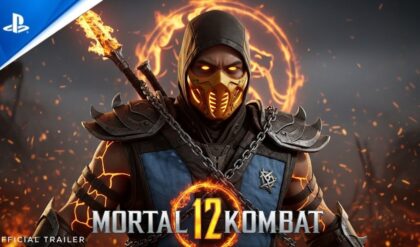Baldur’s Gate 3’s Patch 8, released on April 15, 2025, marked the final major update for Larian Studios’ critically acclaimed RPG, introducing 12 new subclasses—one for each class—alongside features like cross-play and photo mode. These subclasses, drawn from Dungeons & Dragons 5e and adapted for the game’s isometric format, promised fresh playstyles, from the swashbuckling Rogue to the star-guided Druid. While some, like the Hexblade Warlock and Bladesinging Wizard, have been hailed as game-changers, others have disappointed players, struggling to compete in combat or lacking the versatility needed for Baldur’s Gate 3’s challenging encounters. Drawing on community feedback from platforms like X and Reddit, as well as detailed analyses from gaming outlets, this article ranks the three worst subclasses in Patch 8—College of Glamour Bard, Oath of the Crown Paladin, and Circle of Stars Druid—exploring their mechanics, shortcomings, and why they’ve sparked frustration among fans.

1. College of Glamour Bard: A Charming Disappointment
The College of Glamour Bard, inspired by the Feywild’s enchanting magic, aims to be the ultimate support subclass, using charm and temporary hit points to control the battlefield. At level 3, its signature ability, Mantle of Inspiration, grants allies 5 temporary hit points (scaling with level) and charms enemies who attack them, preventing hostile actions unless the charm is broken. At level 6, Mantle of Majesty allows the Bard to cast a Command spell once per long rest, forcing charmed enemies to flee, approach, or freeze. These abilities sound promising, but in practice, they fall flat, earning the subclass a reputation as Patch 8’s weakest.
The primary issue is the subclass’s lack of impact compared to other Bard options. The College of Lore offers superior spell versatility, College of Valor balances spellcasting with martial prowess, and College of Swords delivers devastating melee or ranged attacks. In contrast, Glamour’s temporary hit points are too small to meaningfully protect allies, especially in high-difficulty modes like Tactician or Honour Mode, where enemies deal heavy damage. The charm effect, while flavorful, is unreliable, as many foes resist it or break free quickly, and it competes with the Bard’s already crowded spell list, which includes stronger control options like Hypnotic Pattern or Hold Person. A Reddit user in May 2025 complained, “Mantle of Inspiration feels like a weak Bardic Inspiration knockoff—5 temp HP barely matters past Act 1.”
Mantle of Majesty’s Command spell, limited to one use per long rest, is underwhelming compared to the Lore Bard’s ability to cherry-pick spells like Counterspell or Fireball. The subclass’s reliance on charm also makes it situational, as undead, constructs, and high-Wisdom enemies—common in Baldur’s Gate 3—are often immune. Multiclassing with Sorcerer (as suggested by Deltia’s Gaming) can bolster its damage with spells like Shadow Blade, but this requires significant investment, diluting the Bard’s core strengths. On X, players have called Glamour “a roleplay gimmick,” arguing its mechanics don’t justify choosing it over other Bards, especially in combat-heavy campaigns. For a class known for versatility, the College of Glamour feels like a one-trick pony, charming in theory but ineffective in practice.
2. Oath of the Crown Paladin: A Tank Without Teeth
The Oath of the Crown Paladin is designed as a support-focused tank, emphasizing protection and crowd control over the raw damage of subclasses like Oath of Vengeance or Oathbreaker. At level 1, its Righteous Clarity grants an ally (or the Paladin) their proficiency bonus to attack rolls, boosting accuracy. Level 3 introduces Turn the Tide, a Channel Oath bonus action that heals nearby allies, and Champion Challenge, which compels enemies to attack only the Paladin. Later, Divine Allegiance (level 7) allows the Paladin to absorb damage for an ally, and spells like Compelled Duel and Spiritual Weapon enhance its control. Despite these tools, the subclass ranks among Patch 8’s weakest due to its niche role and lack of offensive power.
The core problem is that tanking is less valuable in Baldur’s Gate 3 than in tabletop D&D. The game’s encounters reward high damage and crowd control over durability, as enemies often target squishy party members or use area-of-effect attacks that bypass taunts. Champion Challenge, while thematic, is limited by its short range and 10-turn duration, and enemies with high Wisdom saves can resist it. Turn the Tide’s healing is modest compared to Cleric spells like Mass Healing Word, and its area-of-effect is too small to compete with the Life Cleric’s Preserve Life. Divine Allegiance is situational, requiring precise positioning and sacrificing the Paladin’s health, which is risky without the damage mitigation of other tank subclasses like the Ancients Paladin.
Compared to Vengeance or Oathbreaker, which excel with Divine Smite and high-damage spells, Oath of the Crown struggles to contribute offensively. Its support focus feels redundant in a party with a Cleric or Bard, and its lack of mobility—unlike the Vengeance Paladin’s Misty Step—limits its battlefield presence. Community feedback on X echoes this, with one player noting, “Crown Paladin is a great idea, but it’s outshined by every other Paladin subclass in actual fights.” Deltia’s Gaming ranks it C-tier, citing its “lower damage and weak mobility” as dealbreakers for high-difficulty play. While it shines in roleplay-heavy campaigns with its lawful, duty-bound flavor, its mechanics don’t hold up in Baldur’s Gate 3’s combat-driven world, making it a frustrating choice for players expecting a versatile holy warrior.
3. Circle of Stars Druid: A Cosmic Letdown
The Circle of Stars Druid, which draws power from celestial constellations, offers a versatile playstyle with three Starry Forms—Archer, Chalice, and Dragon—activated via Wild Shape charges. Archer deals radiant damage, Chalice enhances healing, and Dragon boosts concentration and Intelligence checks. At level 2, the subclass gains Guidance and Guiding Bolt, and later abilities like Cosmic Omen (level 6) add buffs or debuffs to rolls. Despite its thematic appeal, the Circle of Stars ranks among Patch 8’s weakest due to its underwhelming mechanics and poor visual execution, disappointing players who expected a cosmic powerhouse.
The Starry Forms are the subclass’s core feature, but they pale compared to the Circle of the Moon’s transformative Wild Shapes or the Circle of Spores’ necrotic synergy. Archer’s radiant bolts are weak, dealing less damage than a Ranger’s bow or a Sorcerer’s cantrip. Chalice’s healing boost is situational, requiring spellcasting and offering less throughput than a Life Cleric’s Channel Divinity. Dragon’s concentration bonus is useful but doesn’t justify the Wild Shape cost,





